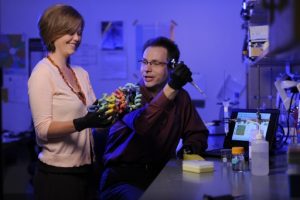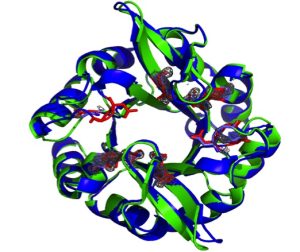
Six of the ten most frequent protein topologies have symmetry on the fold level. We postulate that the evolutionary origin of these symmetric superfolds lies in naturally occurring homo-oligomeric protein complexes that undergo gene duplication and fusion. To test this hypothesis the Rosetta protein design package was used to computationally design a two-fold symmetric variant of imidazole glycerol phosphate synthase (HisF). The new protein, termed FLR, adopts the symmetric βα TIM-barrel superfold. The experimental structure of FLR exhibits two-fold symmetry on the sequence and structural level. When cut in half, FLR dimerizes readily to adopt the same fold. FLR thereby mimics a hypothetical, ancestral symmetric gene-fused monomer of HisF. Design of symmetric proteins requires reduced computational resources and thereby presents an attractive strategy for the construction of larger proteins.

Current Project Members: Carie Fortenberry
Alumni Project Members: Will Proffitt, Ethan Evans, Joel Harp, Beth Repasky, Brent Dorr, Amanda Duran
